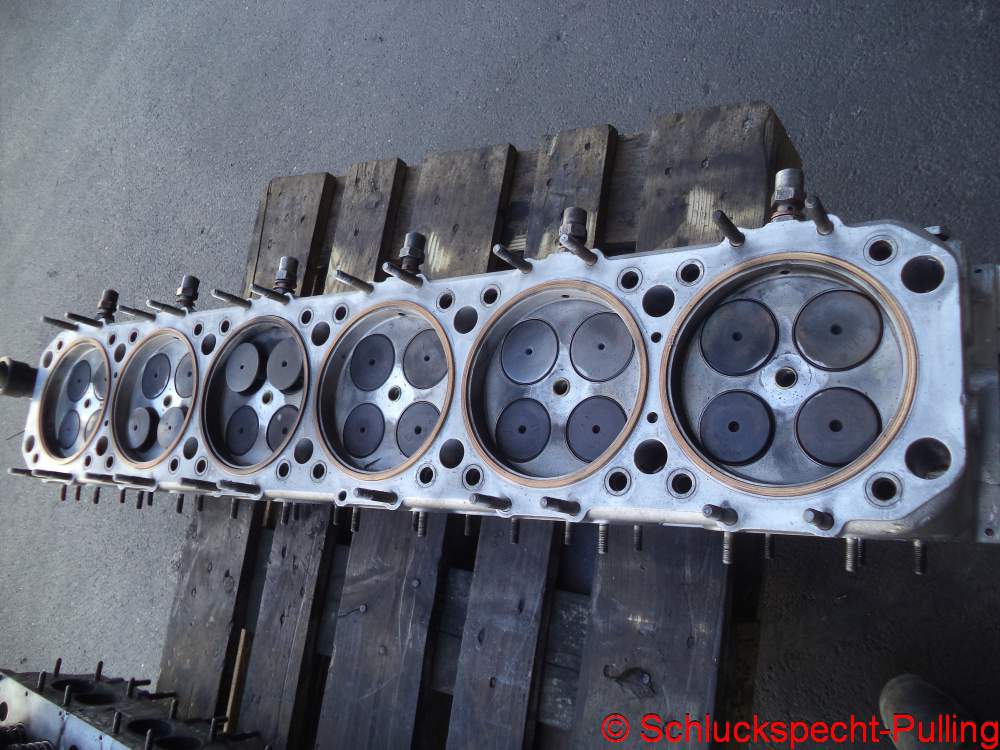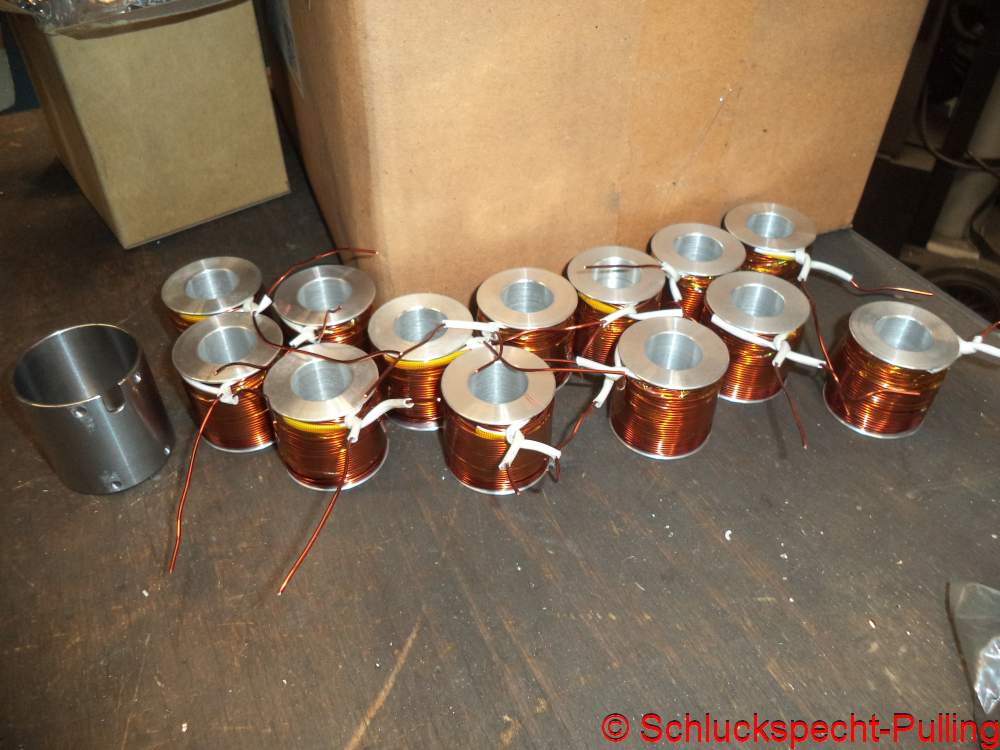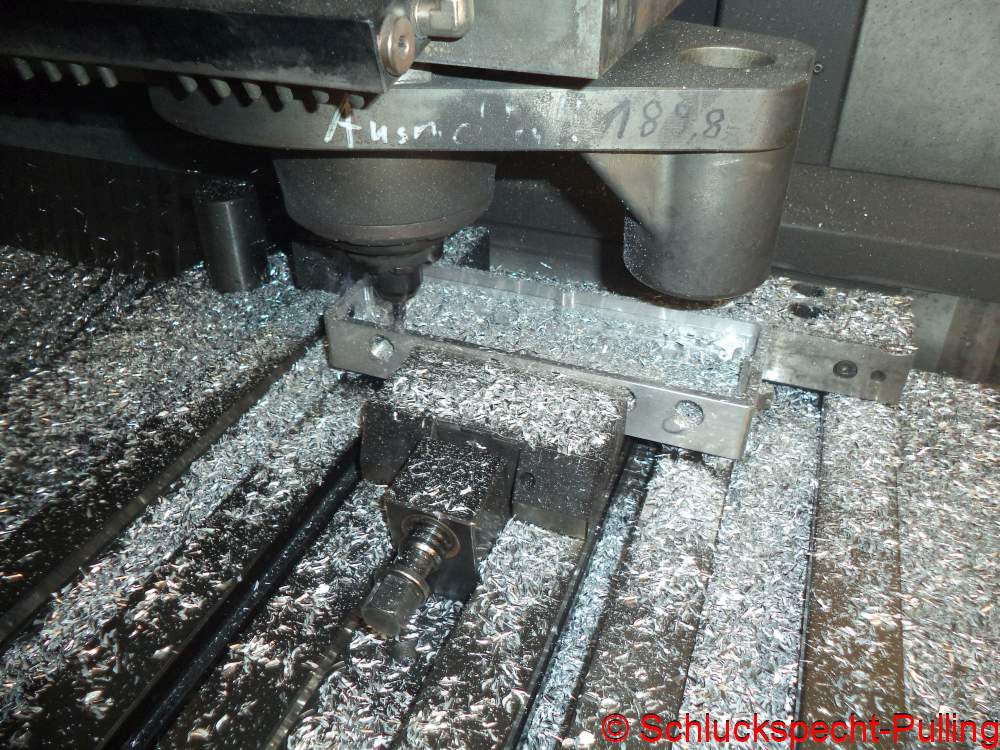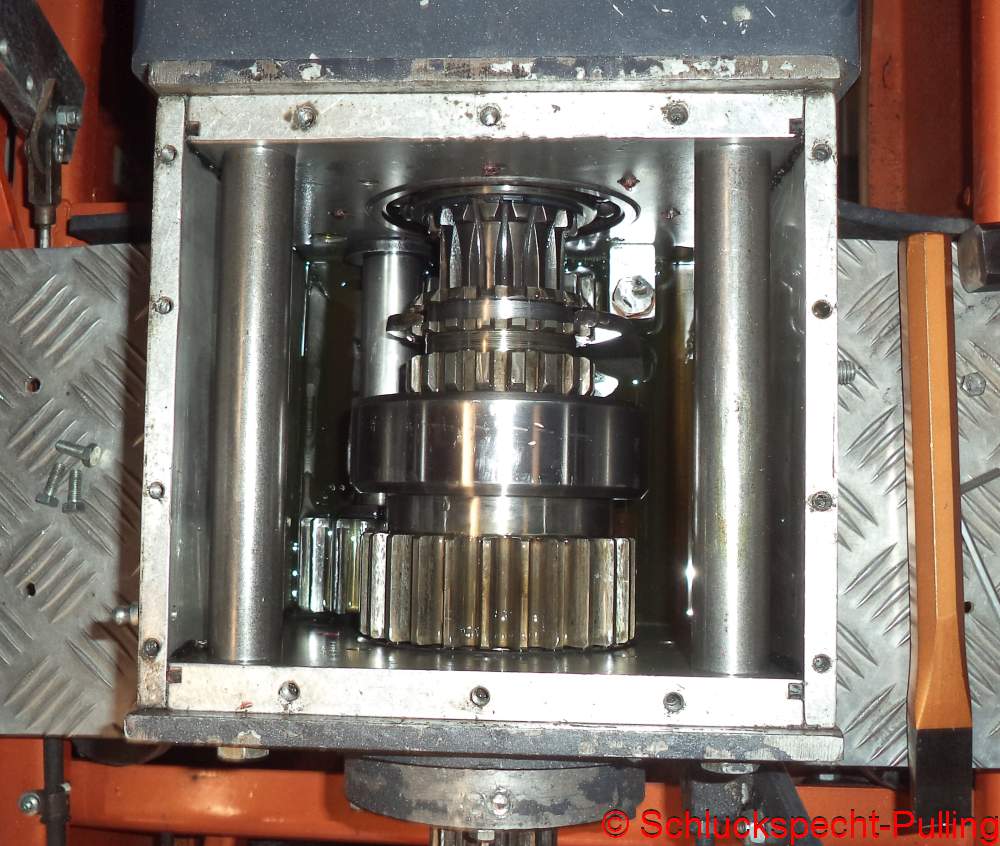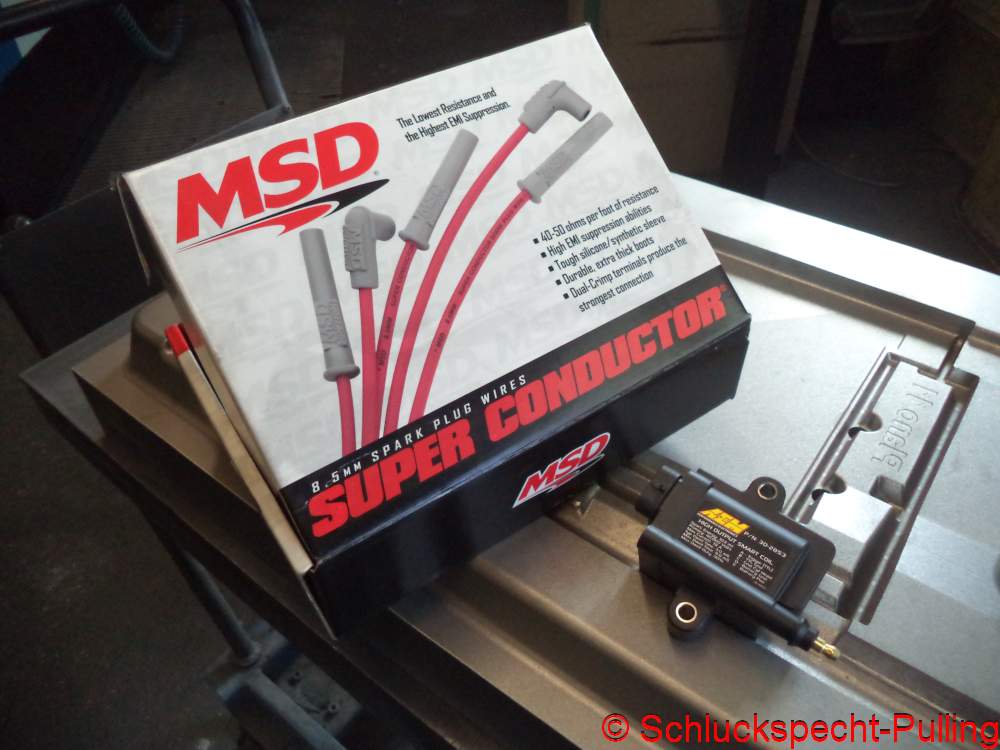Viral contribution (english below)
Nur zehn Tage ist es her, da hatte ich noch Sorgen um den Start der Pullingsaison. Jetzt haben wir in Deutschland und dem Rest der Welt ganz andere Probleme. In Zeiten der Krise sehe ich es als meine Aufgabe an mich der Langeweile unserer Fans zu stellen und was zu unternehmen. Wie könnte man das besser tun als mit einem neuen Beitrag? Richtig, besser geht nicht, also los!
It’s only been ten days since I was still worried about the start of the pulling season. Now we have completely different problems in Germany and the rest of the world. In times of crisis, I see it as my job to face the boredom of our fans and to do something. How could you do that better than with a new post? Right, it doesn’t get better, so let’s go!



Wer kennt sie noch….nur echt mit Specht!! Aber warum die Zündspulen auf den Ventildeckel montieren? Gut aussehen tut das nicht unbedingt. Die Idee ist einfach die Zündkabel so kurz wie möglich zu halten. Die Dinger sind nämlich nichts anderes als Antennen die Hochfrequenzmüll in die Umgebung absondern. Da Hochspannung eh immer etwas tricky ist und sich nicht so gut transportieren lässt—> so direkt wie nur möglich.
Flugzeugbauer Claude Donier sagte einst: „Gute Technik ist immer schön.“
Somit sind auch Zündspulen auf dem Ventildeckel: Schön! 😉
Who knows them … only real with woodpecker! But why mount the ignition coils on the valve cover? It doesn’t necessarily look good. The idea is to keep the ignition cables as short as possible. These things are nothing more than antennas that emit high-frequency waste into the environment. Since high voltage is always a bit tricky and not easy to transport — > as direct as possible.
Aircraft manufacturer Claude Donier once said: „Good technology is always beautiful.“
So there are also ignition coils on the valve cover: Beautiful! 😉



Die Billetgehäuse für die Spulentreiber nehmen direkt an der Ansaugbrücke Platz. Auch hier wieder kurze Wege für hohe Ströme.
The billet housings for the coil drivers sit directly on the intake manifold. Again, short distances for high currents.

Machen wir uns ein wenig Spaß mit dem Schlauchsystem von BAT-Motorsport.
Zugegebenermaßen ist das Schneiden der Stahlflexleitungen meist ein wenig nervig weil der Flechtmantel sofort ausfranst und man das Ende nicht mehr in die Fittinge bekommt. Klar, kann man da fett Gewebeband drum ziehen, schneiden und dann das Klebeband wieder abziehen…aber neee…
Let’s have some fun with the hose system from BAT-Motorsport.
Admittedly, cutting the steel braided lines is usually a little annoying because the braided jacket frays immediately and you can no longer get the end into the fittings. Sure, you can pull fat tape around it, cut it and then remove the tape again … but nooo …

Nach einigen Versuchen bin ich bei Kaptonklebeband aus dem Elektrobereich hängen geblieben. Das hat in meinen Augen den Vorteil das es a) durchsichtig ist und b) hohe Temperaturen aushält. Weil seihen wir doch mal ehrlich…..wie schneidet man das Zeugs? Richtig, mit der Flex….
After a few tries I got stuck with Kapton tape from the electrical sector. In my eyes, this has the advantage that it is a) transparent and b) endures high temperatures. Because let’s be honest ….. how do you cut the stuff? Right, with the Flex ….

1mm Dünnblech Trennscheibe und eine drehzahlregulierbarer(!) Einhandwinkelschleifer. Auf langsamster Geschwindigkeit hat man einen sehr kontrollierten, recht kühlen Schnitt.
1mm thin sheet cutting disc and a speed-adjustable (!) One-hand angle grinder. At slow speed you have a very controlled, quite cool cut.

Anzeichnen, Kaptonband drum und….
Mark, wrap Kapton tape aound and ….

…Schnitt. Weiterer Vorteil von Kaptonband: Es ist so dünn das es um dem Schlauch drum bleiben kann.
…Cut. Another advantage of Kapton tape: It is so thin that it can remain around the hose.


Die Fittingsmuttern werden bis auf Anschlag aufgeschoben. Ganz wichtig: Bevor es weiter geht muss eine Markierung angebracht werden…
The fitting nuts are pushed on as far as they will go. Very important: a mark must be made before continuing …

…anhand derer man sofort erkennt ob sich der Schlauch beim Einschrauben des Gegenstücks raus schiebt. Weil mal ganz ehrlich, die Schläuche hängen an einer Leitung die mindestens 3 Bar Druck hat und bis zu 100 Liter/Minute Methanol fördert. Da sollten die Verschraubungen passen 😉
… on the basis of which you can immediately see whether the hose slides out when the counterpart is screwed in. Because honestly, the hoses hang on a line that has at least 3 bar pressure and delivers up to 100 liters / Minute methanol. Since the screw connections should fit 😉

Männerblumenstrauß
Men’s bouquet

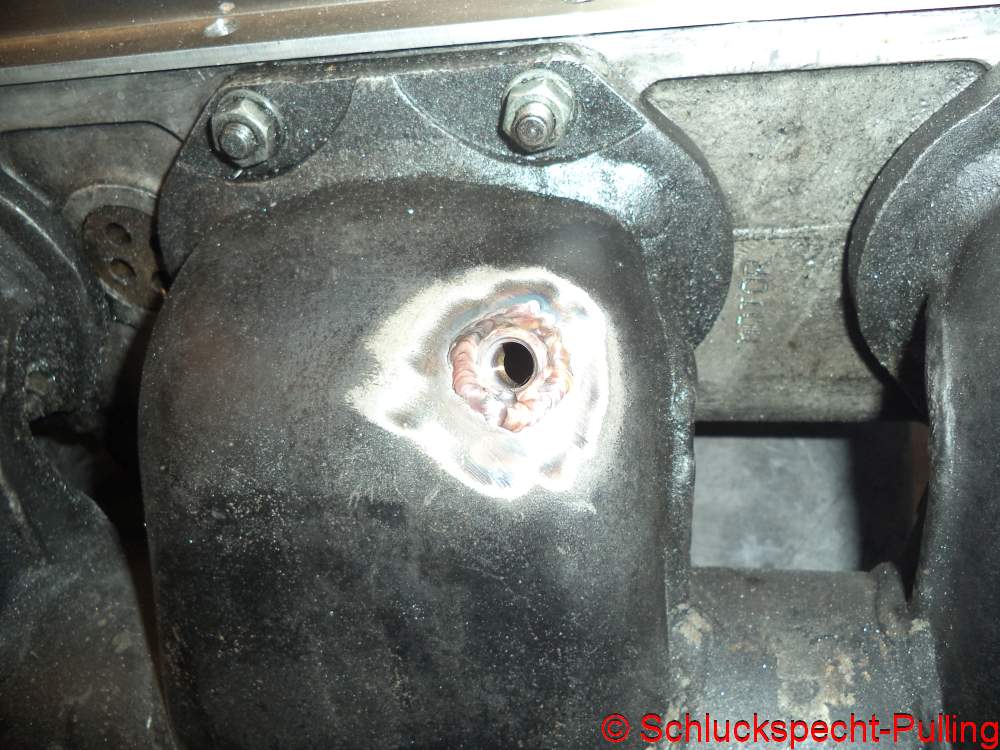

Die restlichen Zylinder haben auch Gewindebuchsen für die Temperaturfühler bekommen.
The remaining cylinders have also been provided with threaded bushings for the temperature sensors.

Wo wir gerade beim Thema sind. Ich meine Zollgewinde sind schon Sche*sse, aber wenn sie dann auch noch konisch sind wird’s richtig ätzend. Naja, ein zölliges Schneideisen und ein 14er Ringschlüssel haben zumindest den konischen Spuk beseitigt. 😉 😉
Speaking of which. I mean inch threads are sh*t, but if they are also conical then it gets really caustic. Well, an Inch thread cutter and a 14mm ring wrench have at least eliminated the conical spook. 😉 😉

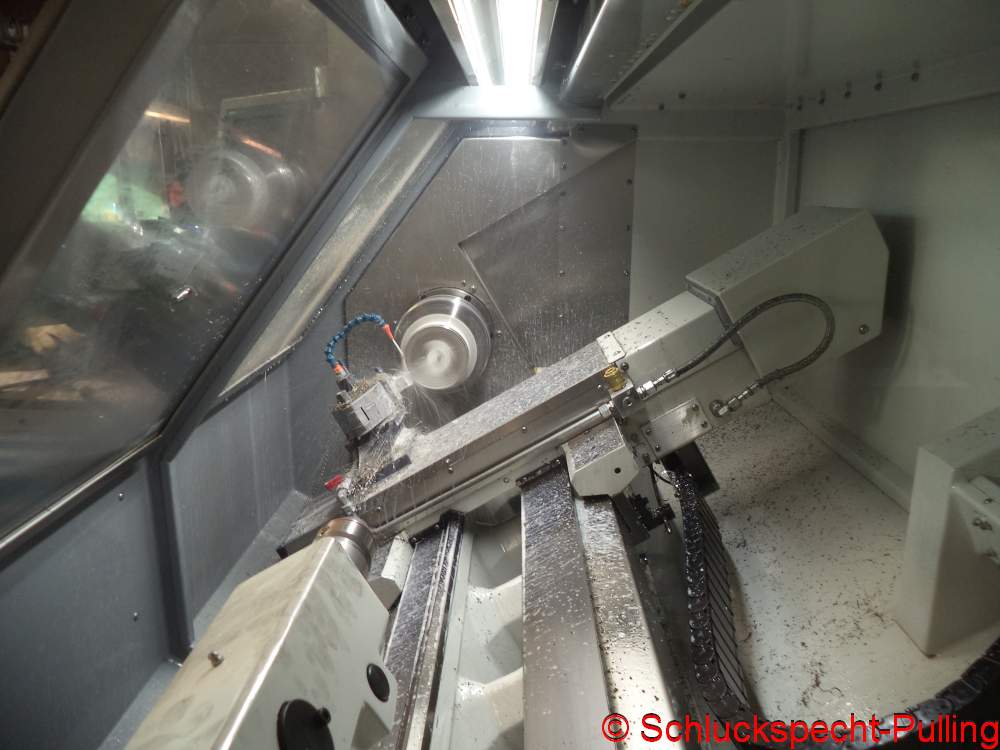


Auf der Drehbank entstehen Edelstahlflansche für die Abgasrohre an den Turboladern.
Stainless steel flanges for the exhaust pipes on the turbochargers are created on the lathe.

Ein letztes Foto vom alten Design….
One last photo of the old design …

… denn wir hatten Besuch von Schmitte 1896.
… because we had a visit from Schmitte 1896.
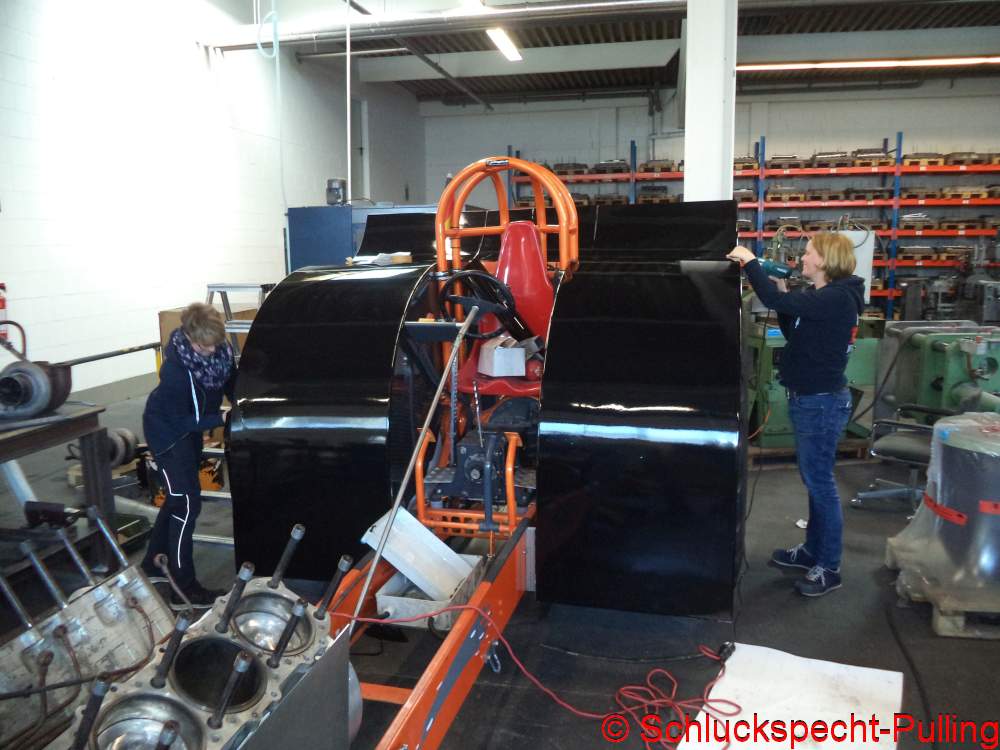
Zumindest die Kotflügel sollen schon mal im späteren Design erstrahlen. Jaja, das beißt sich aktuell noch ziemlich heftig mit dem Orange…ich weiß.
Wenn uns der Coronascheiß die Zeit „zur Verfügung stellt“ machen wir den Rest auch noch passend 😉
At least the fenders should shine in the later design. Yeah, it still bites pretty hard with the orange … I know.
If the Corona shit „gives us the time“ we will make the rest fit 😉
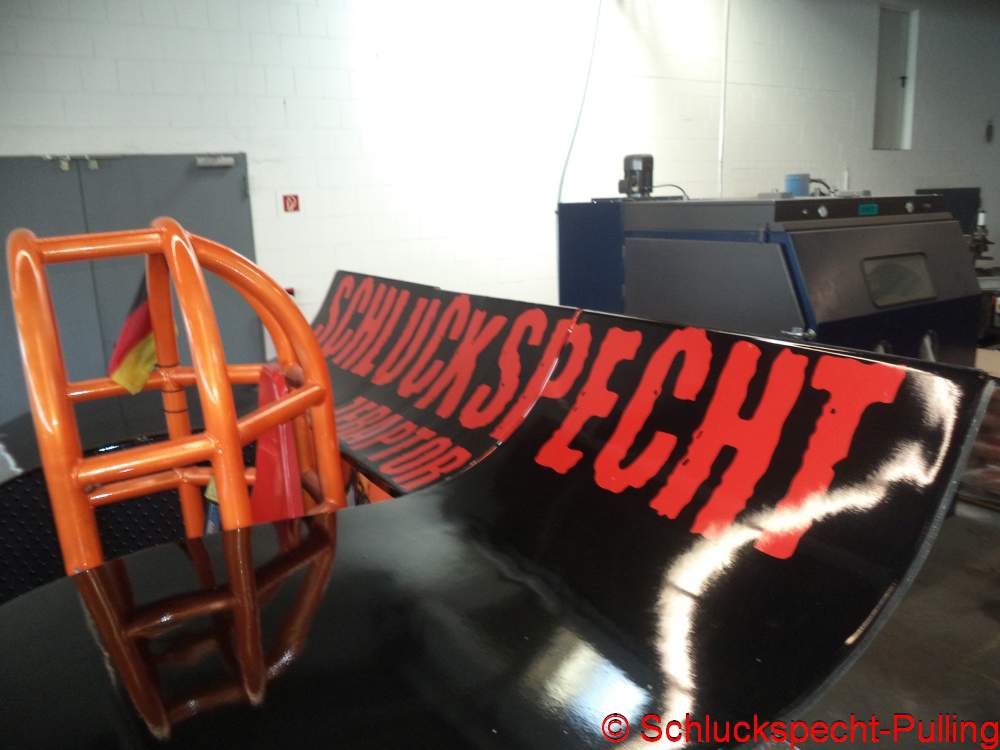

Jetzt ist es offiziell: Schluckspechtzeraptor wird er heißen.
Die Schrift „zeraptor“ ist inzwischen schon auf den Kotflügel gewandert damit man sie besser sehen kann.
Vielen Dank an dieser Stelle für die super Arbeit!
Now it’s official: Schluckspechtzeraptor is the name.
The font „zeraptor“ has already moved to the fender so that you can see it better.
Many thanks at this point for the great work!
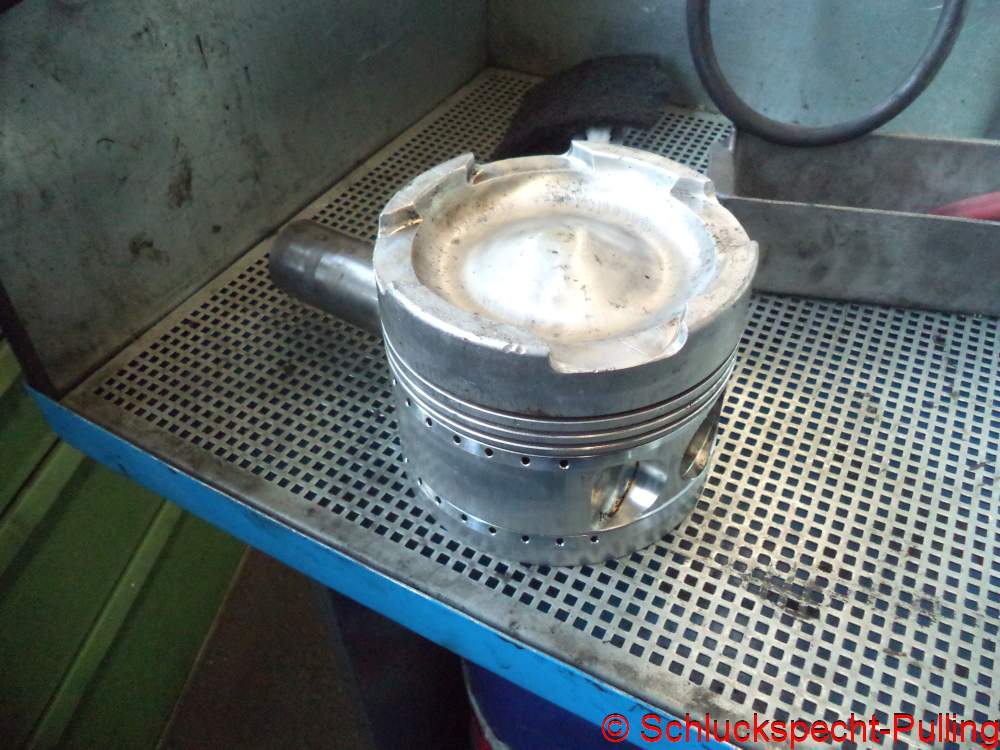

Transmashkolben in originaler Ausführung. Die mögen für die originale Ausführung des Motors auch ganz gut sein, für eine Alky-Pulling-Wahnsinnsanwendung sind sie….wie soll ich sagen….einfach murx 😉 😉
Vergleiche mit Pullingkolben aus dem Allison sprechen hier Bände…. dazu vielleicht später mal mehr. Ich hab da so eine Idee. 😉
Ein Problem das der Motor auf alle Fälle hat sind die quasi nicht vorhandenen Ölabstreifringe. Jaja, der Kolben hat zwei Kolbenringe unter denen Ablaufbohrungen angebracht sind. Mit dem was ich unter Ölabstreifringen verstehe hat das allerdings wenig zu tuen. So kommt es, dass die meisten Alkyumbauten vom Transmash qualmen wie ne Dampflok, mindestens mal im Leerlauf. Der Unterdruck im Ansaugsystem zieht einfach das Öl in den Brennraum.
Original Transmash pistons. They may be quite good for the original version of the engine, for an alky pulling insanity application they are …. how can I say …. just bad 😉 😉
Comparisons with pulling pistons from the Allison speak volumes here … maybe more on that later. I have an idea. 😉
A problem that the engine has in any case are the virtually non-existent oil control rings. Yes, the piston has two piston rings under which drain holes are made. It has little to do with what I mean by oil control rings. So it happens that most of the Transmash alkyburner smoke like a steam locomotive, at least once in idle. The vacuum in the intake system simply pulls the oil into the combustion chamber.

Nach stundenlangem Suchen und nachdem ich halb Deutschland verrückt gemacht habe, hier ein Bild von „echten“ Abstreifringen.
After searching for hours and after driving half of Germany crazy, here is a picture of „real“ oil control rings.


Geilomat. Scheint zu passen! Müssen sie nur noch in den Kolben gefentert werden….
Horny stuff. Seems to fit! They only have to be popped into the pistons ….
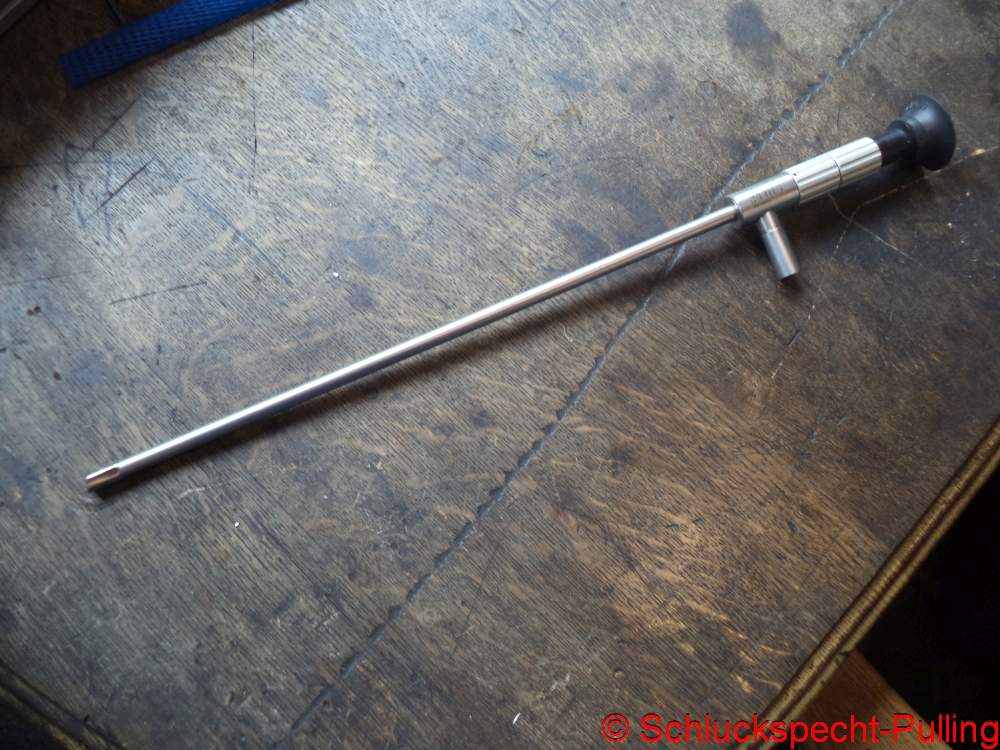
Vorletztes Thema: Endoskop
Immer den Kopf abzuschrauben um nachzusehen ob Kolben, Kopf und Ventile noch in Ordnung sind ist voll nicht effektiv. Einfach auf Verdacht weiter fahren bis die Brocken auf der Strecke liegen ist voll noch weniger effektiv.
Ein Endoskop muss her! Und zwar ein richtiges und nicht diese USB Dinger die tonnenweise im Internet angeboten werden.
Jaja, ich gebs zu, so ein Teil kostet auch als Schnapper nicht gerade wenig. Im Umkehrschluss sind Brocken auf der Bahn deutlich teurer.
Penultimate topic: endoscope
Always unscrewing the head to see if the piston, head and valves are still in order is not fully effective. Just continue driving on suspicion until the chunks are on the track is even less effective.
An endoscope is needed! A real one and not these USB things that are offered in tons on the Internet.
Yes, I admit, such a part does not cost very little even as a snapper. Conversely, chunks on the track are significantly more expensive.
 Direkt mal am VR6 testen. Kolben und Ventile auf Zylinder 3 sind in Ordnung 😉
Direkt mal am VR6 testen. Kolben und Ventile auf Zylinder 3 sind in Ordnung 😉
Ventile?
Test it directly on the VR6. Pistons and valves on cylinder 3 are OK 😉
Valves?

Richtig, das Dingen hat eine Schwenkoptik mit der man sich sogar die Ventile durch die Zündkerzenbohrung ansehen kann. Ich könnte Konfetti kotzen!!! 😉 😉
Letztes Thema:
Right, the thing has a swivel look with which you can even look at the valves through the spark plug hole. I could vomit confetti !!! 😉 😉
Last topic:

Kabelverbindungen. Im Ernst, ich bekomme immer die Vollkrise wenn richtig gute Kabelbäume genau im Bereich zwischen Kabelisolieren und Stecker lose Adern haben. Das sind nicht nur empfindliche Stellen, sondern hier ist ein Kabelbruch direkt schon vorprogrammiert. Da das obendrein nicht schön ist, kann es nach Claude Dornier (siehe weiter oben) auch keine gute Technik sein 😉
Was also tun?
Cable connections. Seriously, I always get the complete crisis when really good cable harnesses have loose wires in the area between the cable insulation and the connector. These are not only sensitive areas, but a cable break is already pre-programmed here. Since that is not nice on top of that, it cannot be a good technique according to Claude Dornier (see above) 😉
So what to do?

NEIN! Er macht es schon wieder!!! 😉 😉
NO! He’s doing it again !!! 😉 😉



Der Gießer in seiner natürlichen Umgebung….. 😉 😉
The caster in its natural environment ….. 😉 😉




„Hobby ist mit größtmöglichem Aufwand den geringst möglichen Nutzen zu erzielen.“ Ich glaube mehr muss nicht gesagt werden 😉 😉
Tja wie geht es weiter? Beim Trecker Schritt für Schritt, das ist klar. Beim Coronascheiß weiß das so genau wohl niemand. Wie sich das alles auf die Pullingsaison auswirken wird? Meine Hoffnungen Schwinden.
Aber es ist nichts so schlecht als das es nicht irgendwo für gut ist. So nimmt es uns den Zeitdruck 😉
„Hobby is to achieve the least possible benefit with the greatest possible effort.“ I don’t think more needs to be said 😉 😉
So what’s next? With the tractor step by step, that’s for sure. Nobody knows that for Corona shit. How will all of this affect the pulling season? My hopes are fading.
But it’s not that bad that it’s not for good anywhere. So it takes the time pressure from us 😉

Wenigstens etwas Spaß mit Treckern sollte man allerdings haben 😉
Für die Allgemeinheit tut man ja auch was: Jeder Hub 10,3 Liter hundertprozentig virenfreie Luft. In dem Sinne…bleibt gesund und stay tuned!
At least you should have some fun with tractors 😉
You also do something for the general public: each stroke of 10.3 liters of 100% virus-free air. In this sense … stay healthy and stay tuned!






